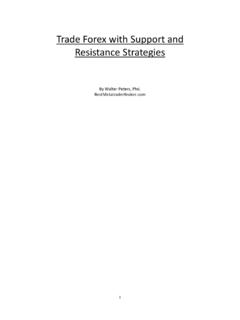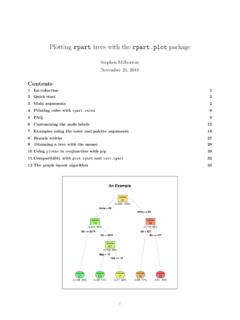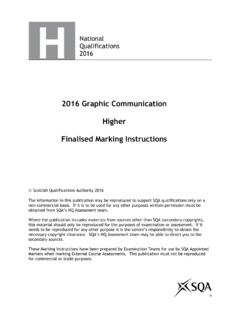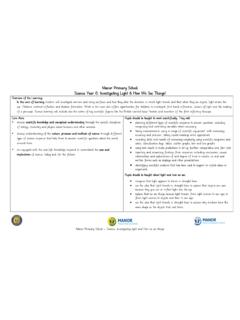Transcription of 12 Signals to Master any Market' - MQL5
1 12 signals to master any market ' Master these Major Candlestick Signals if you want to Master the market . Copyright Stephen W. Bigalow 2007 May not be duplicated or distributed Published by The Candlestick Forum LLC All rights reserved Table of Contents Basics of Japanese Candlesticks Doji signal Bullish Engulfing signal Bearish Engulfing signal Hammer signal Hanging Man signal Piercing Pattern Dark Cloud Bullish Harami Bearish Harami Morning Star Evening Star Kicker Signals Shooting Star Inverted Hammer The Basics of Japanese Candlesticks Candlestick trading analysis does not require knowing intricate formulas or ratios.
2 Candlestick analysis does not require massive amounts of education to effectively utilize the Signals . The stock investing basics of Japanese Candlesticks result in clear and easy to identify patterns that demonstrate highly accurate turns in investor sentiment. The average investor does not have to be dependent on the investment professional, a professional whose recommendation does not always have your interest at the forefront. Whether totally unfamiliar with investment concepts or very sophisticated in investment experience, the Japanese Candlestick trading formations are easily utilized. The Signals and patterns are easy to see.
3 As illustrated, a stock price closing higher than where it opened will produce a white candle. A stock price closing lower than where it opened creates a black candle. The boxes formed are called "the body". The extremes of the daily price movement, represented by lines extending from the body, are called "shadows or tails." A stock price closing where it opened or very close to where it opened is called a 'doji." A hollow candle forms when the stock closes higher than its opening price. A solid (or filled) candle forms when the stock closes lower than its opening price. Memorizing the Japanese Candlesticks names and descriptions of the candlestick trading formations is not necessary for successful trading.
4 Reading about the Japanese Candlesticks Signals is interesting and it aids in remembering them. The Candlestick Forum is the foremost aid in learning how to use the Japanese Candlestick trading Signals correctly. Stephen W. Bigalow has studied, analyzed and developed simple methods for profiting from the Signals . His published book, PROFITABLE CANDLESTICK TRADING: PINPOINTING market OPPORTUNITIES TO MAXIMIZE PROFITS, incorporates the common sense, logical disciplines that most investors are aware of but ignore. The Dynamic Doji The Japanese say that whenever a Doji appears, always take notice. A well-founded rule of Candlestick followers is that when a Doji appears at the top of a trend, in an overbought area, sell immediately.
5 Conversely, a Doji seen at the bottom of an extended downtrend requires buying Signals the next day to confirm the reversal. Otherwise, the weight of the market could take the trend lower. The Doji signal is composed of one candle. It is formed when they open and the close occur at the same level or very close to the same level in a specific timeframe. In Candlestick charting, this essentially creates a cross formation. As the following illustration demonstrates, the horizontal line represents the open and close occurring at the same level. The vertical line represents the total trading range during that time.
6 Doji Star Upon seeing a Doji in an overbought or oversold condition, an extremely high probability reversal situation becomes evident. Overbought or oversold conditions can be defined using other indicators such as stochastics, When a Doji appears, it is demonstrating that there is indecision now occurring at an extreme portion of a trend. This indecision can be portrayed in a few variations of the Doji. Long-legged Doji The Long-legged Doji is composed of long upper and lower shadows. Throughout the time period, the price moved up and down dramatically before it closed at or very near the opening price.
7 This reflects the great indecision that exists between the bulls and the bears. Gravestone Doji The Gravestone Doji is formed when the open and the close occur at the low end of the trading range. The price opens at the low of the day and rallies from there, but by the close the price is beaten back down to the opening price. The Japanese analogy is that it represents those who have died in battle. The victories of the day are all lost by the end of the day. A Gravestone Doji, at the top of the trend, is a specific version of the Shooting Star. At the bottom, it is a variation of the Inverted Hammer.
8 Dragonfly Doji The Dragonfly Doji occurs when trading opens, trades lower, then closes at the open price which is the high of the day. At the top of the market , it becomes a variation of the Hanging Man. At the bottom of a trend, it becomes a specific Hammer. An extensively long shadow on a Dragonfly Doji at the bottom of a trend is very bullish. Doji s that occur in multi- signal patterns make those Signals more convincing reversal Signals Harami Doji Evening Star - Abandoned Baby Having the knowledge of what a Doji represents, indecision, allows the Candlestick analyst to take advantage of reversal moves at the most opportune levels.
9 Regardless of whether you are trading long-term holds for day trading from the one-minute, five-minute, and fifteen-minute charts, the Doji illustrates indecision in any time frame. Bullish Engulfing signal A Bullish Engulfing signal is one of the major Signals . When the elements out of a Bullish Engulfing signal are broken down, an investor can clearly understand what was going on in investor sentiment to cause a reversal. 400 years of observations from Japanese Rice traders has recognized the Bullish Engulfing signal as a very high probability reversal signal . Description The Engulfing pattern is a major reversal pattern comprised of two opposite colored bodies.
10 The Bullish Engulfing Pattern formed after a downtrend. It opens lower that the previous day s close and closes higher than the previous day s open. Thus, the white candle completely engulfs the previous day s black candle. Criteria 1. The body of the second day completely engulfs the body of the first day. Shadows are not a consideration. 2. Prices have been in a definable down trend, even if it has been short term. 3. The body of the second candle is opposite color of the first candle, the first candle being the color of the previous trend. The exception to this rule is when the engulfed body is a doji or an extremely small body.







